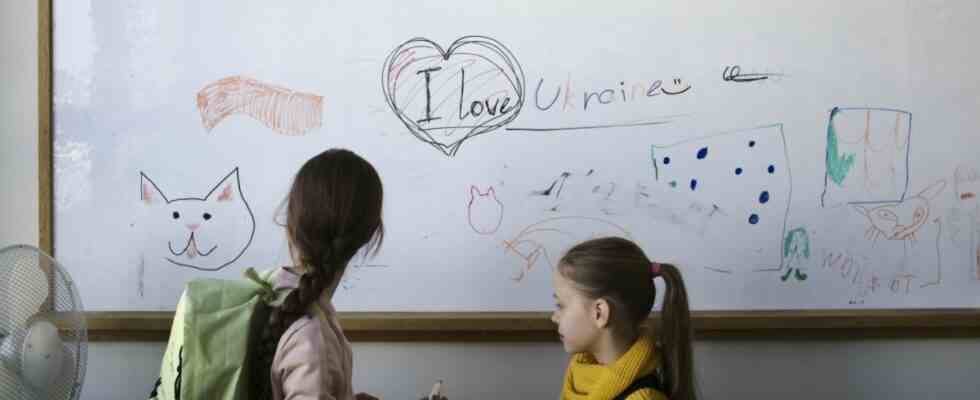The three Ukrainian students who have been attending the Wilhelm von Humboldt Community School in Berlin since this week communicate using translation apps and voice-image cards. That actually works well, says headmistress Judith Bauch. The children, nine, ten and eleven years old, learn German for two hours a day, otherwise they are integrated into regular classes. More children from Ukraine will probably soon join them.
Education politicians estimate that at least a third of the approximately 240,000 Ukrainian refugees in Germany so far are children and young people who will sooner or later have to find accommodation in schools or day-care centers. There are no reliable figures on this yet. Nevertheless, the urgent question is: What will happen to the Ukrainian schoolchildren once they have arrived in Germany?
There seem to be two types of answer to this question: either the young people are allowed to pursue what they have learned so far as calmly as possible – through Ukrainian textbooks or online lessons with Ukrainian teachers, keyword: connectivity. Or you teach them German as quickly as possible and introduce them to the German education system, keyword: integration.
So far, German politics seems to be moving in the second direction. The state ministers of education have set up a task force to help refugee students and teachers as quickly as possible. For example, it is intended to clarify whether Ukrainian teachers can be employed in German schools and to what extent digital Ukrainian teaching material can be integrated into the lessons. The task force met for the first time last week.
The history of Ukraine is missing from German curricula
In many countries, the welcome classes that were set up for refugees in 2015 are now being discussed again. Federal Education Minister Bettina Stark-Watzinger (FDP) has also suggested such classes for Ukrainian schoolchildren. They aim to teach refugees German as quickly as possible so that they can then be integrated into regular classes. According to the Senate Department for Education, 50 welcome classes have already been set up at public general schools in Berlin. In Bavaria, there have recently been “educational welcome groups” for Ukrainian refugees, and in Schleswig-Holstein German is taught as a second language in separate classes.
However, the current situation is different from 2015: Nobody knows how long the Ukrainian refugees will stay in Germany. The Ukrainian Consul General Iryna Tybinka spoke out against “integration classes” at a presentation at the KMK and advocated teaching according to Ukrainian curricula. The students are only staying in Germany temporarily, so it is important to ensure the continuity of the educational processes and to maintain the national identity of the Ukrainian children. The history of Ukraine is almost entirely absent from German curricula.
“I can understand the wish that all this will be over quickly. But the children have to get here now, too,” says Berlin school principal Judith Bauch. Nevertheless, she is currently trying to ensure that one of her students’ mothers, a Ukrainian teacher, can also teach the children their mother tongue.
“It shouldn’t be an either/or,” agrees the President of the German Teachers’ Association, Heinz-Peter Meidinger. He advocates an open concept that combines German lessons and digital Ukrainian learning materials. Also in view of the shortage of teachers, which had already put a strain on the schools, one must now find pragmatic solutions: in order to take on the role of mediator, one could also hire adults without any pedagogical training. According to Meidinger, one shouldn’t hope too soon for Ukrainian teachers to fill the gaps: “I’m skeptical whether they’ll be available in the schools so quickly. Maybe for a few hours a week, but certainly not for 20.”

